
The Engine



Camshaft and exhaust valve gear
The exhaust valves are actuated by the camshaft which runs unenclosed in a trough on the left-hand side of the engine. The pushrods and springs are also in the open
air.
What is unusual about this engine is that the inlet valves have no mechanical actuation. They are known as atmospheric valves, and rely on the suction from the downward stroke of the pistons to pull them open against a light spring. This was a less complex solution than having another camshaft, but was soon abandoned on future designs due to lack of control under varying engine conditions.
The speed of the engine is controlled by a governor, the bob-weights of which are incorporated in the camshaft drive gear. Originally this would have controlled the engine speed by selectively disengaging the exhaust valves, but this car has been modified at some time in its life so that the governor now controls the carburettor. Unfortunately, the carburettor is designed around optimisation of performance at a constant speed and load, so is not particularly suited to governor-commanded changes.
Engine
A four-cylinder 8 hp Daimler Phoenix engine of just under 2.5 litres capacity. It is four-stroke and runs on ordinary petrol.
In many respects the engine can be considered to be two twin-cylinder engines incorporated into one. There are two cylinder blocks, each with a pair of cylinders, bolted onto a common crankcase with a simple three-bearing crankshaft. Likewise, there are two cylinder heads. Even the camshaft is made from two pieces bolted together.
The pistons were originally made from cast iron, but these were replaced by lighter aluminium versions when the engine was rebuilt in 1996. The connecting rods are steel, and it is evident that one has failed at some point. There is a most skilful repair to the crankcase and sump, with cast bronze sections let in – presumably where a broken rod has smashed out of the side.
That replacement rod was also a different style to the other three. It is not known when the failure occurred. Due to recurring cracking problems, all the rods were replaced in 2016.
The crankshaft bearings would originally have been solid bronze, and had been replaced with white-metal lined versions before reverting back to bronze.
Engine viewed from the right-hand side
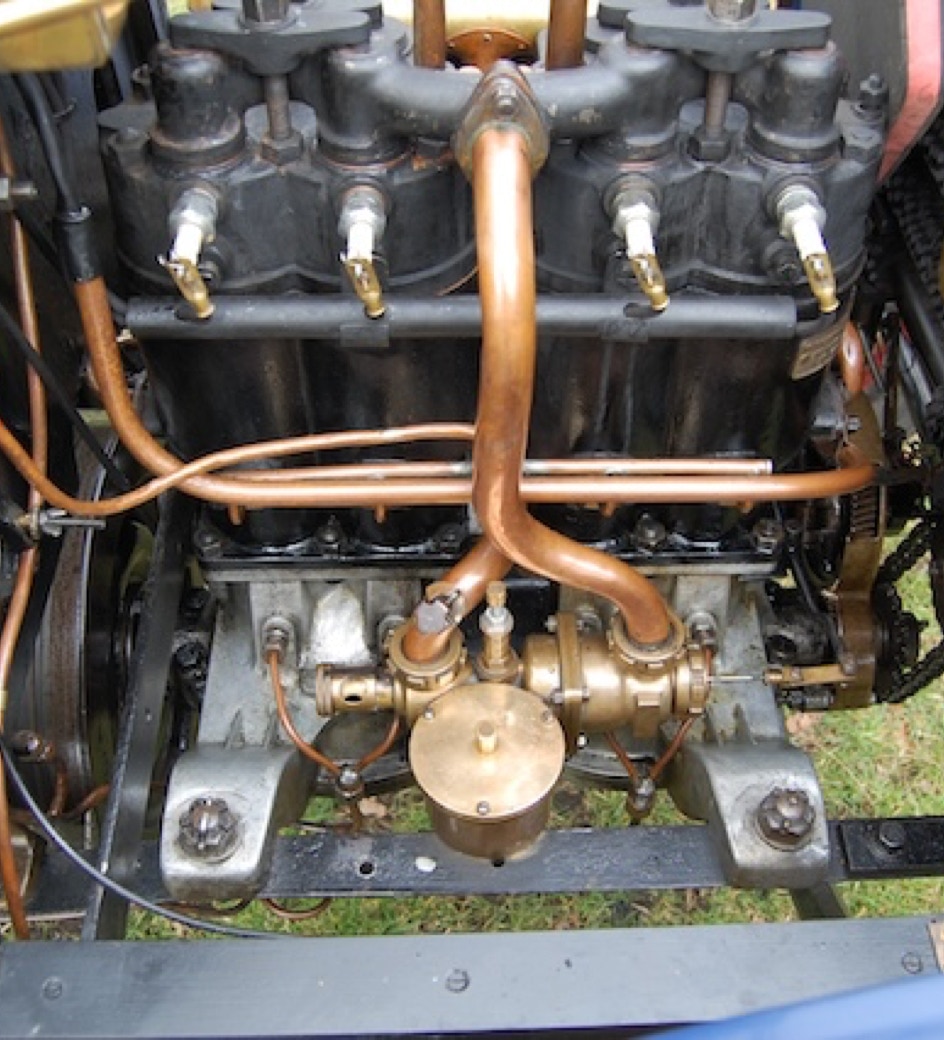
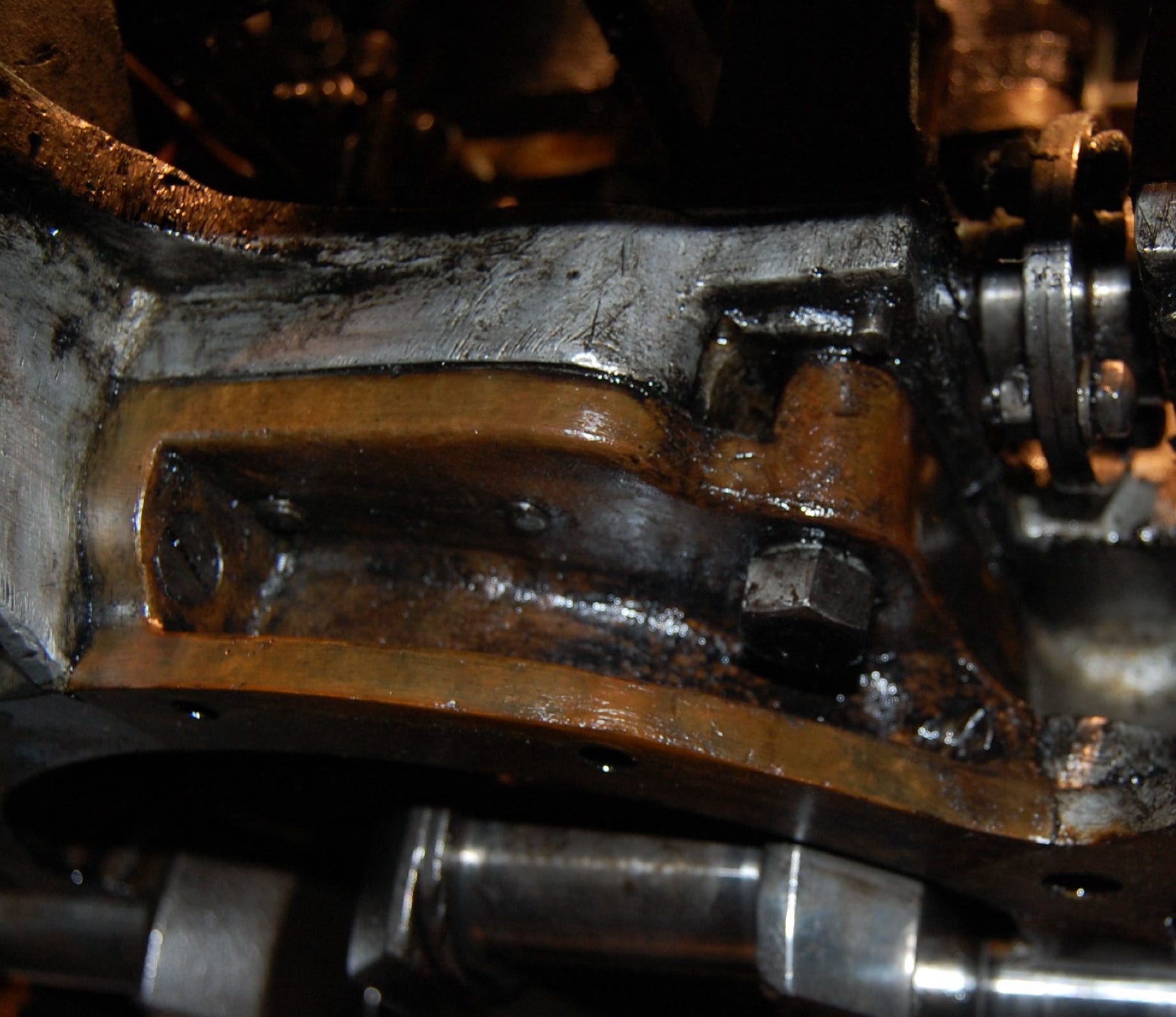
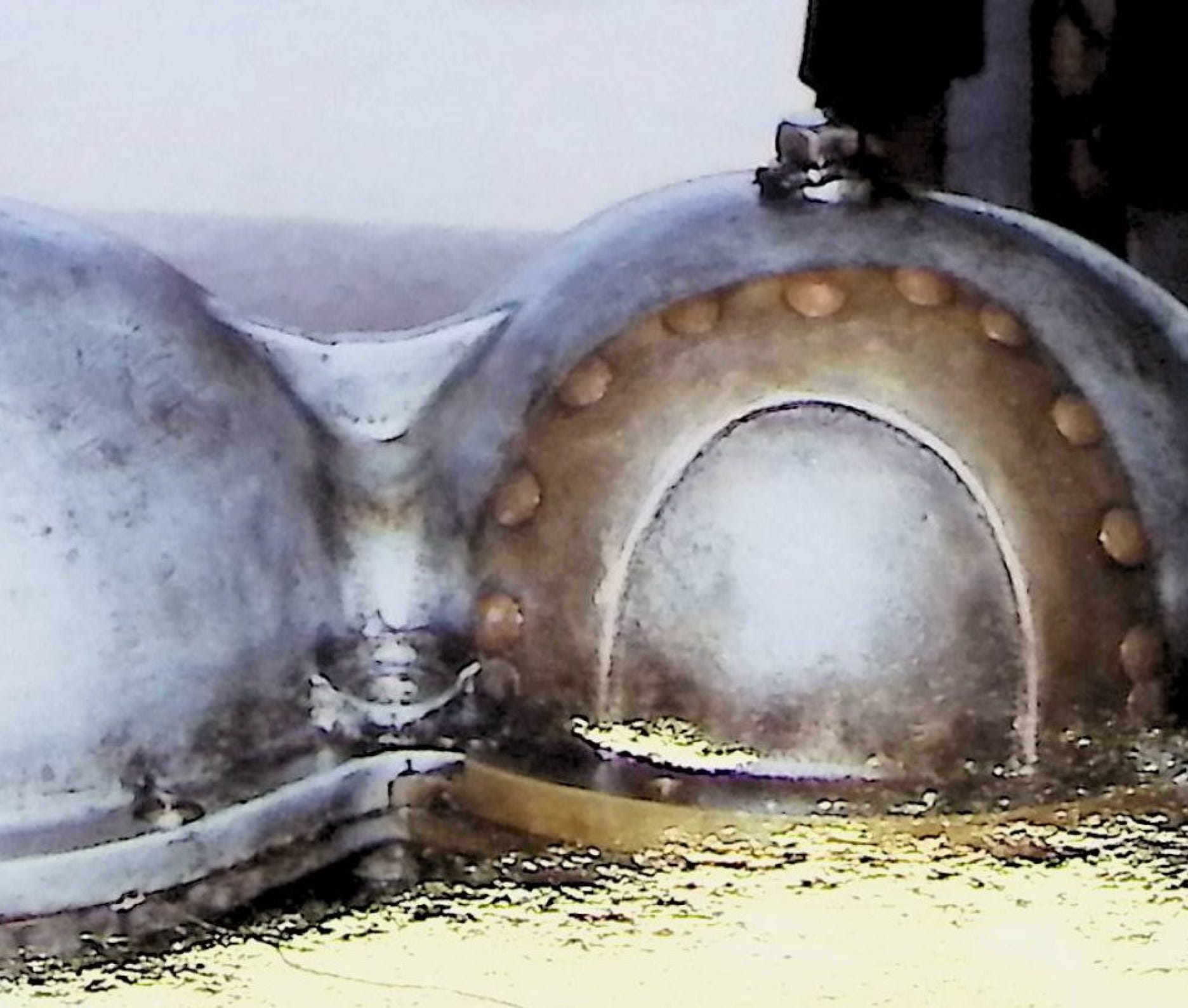
Inserted bronze cast section to repair crankcase
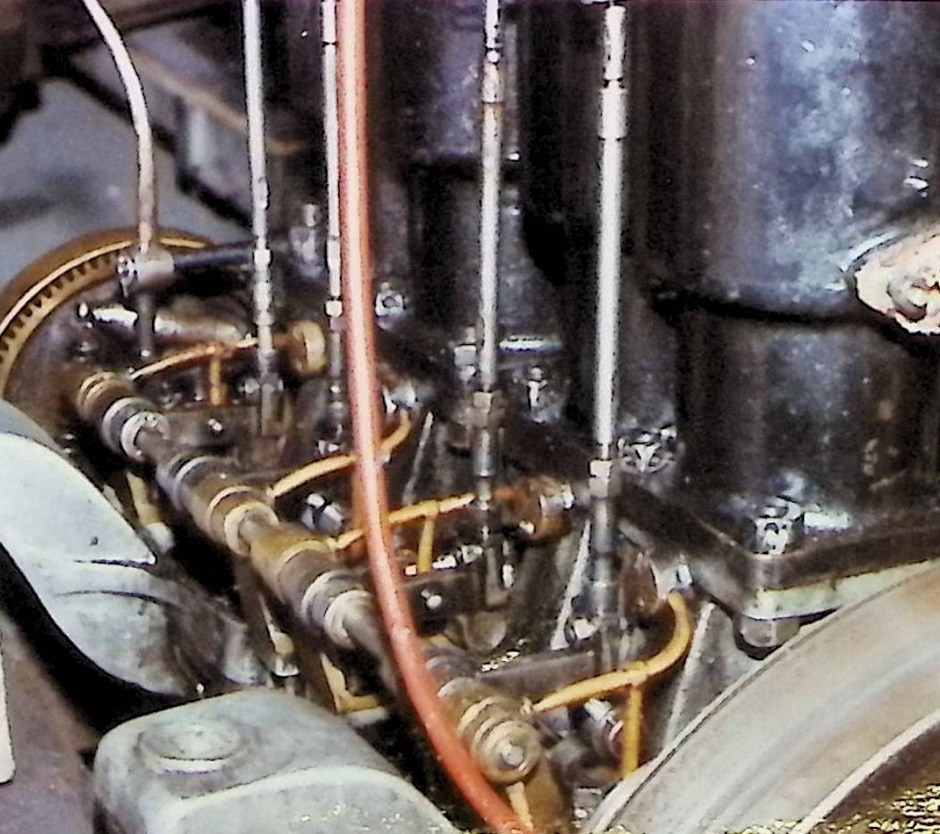
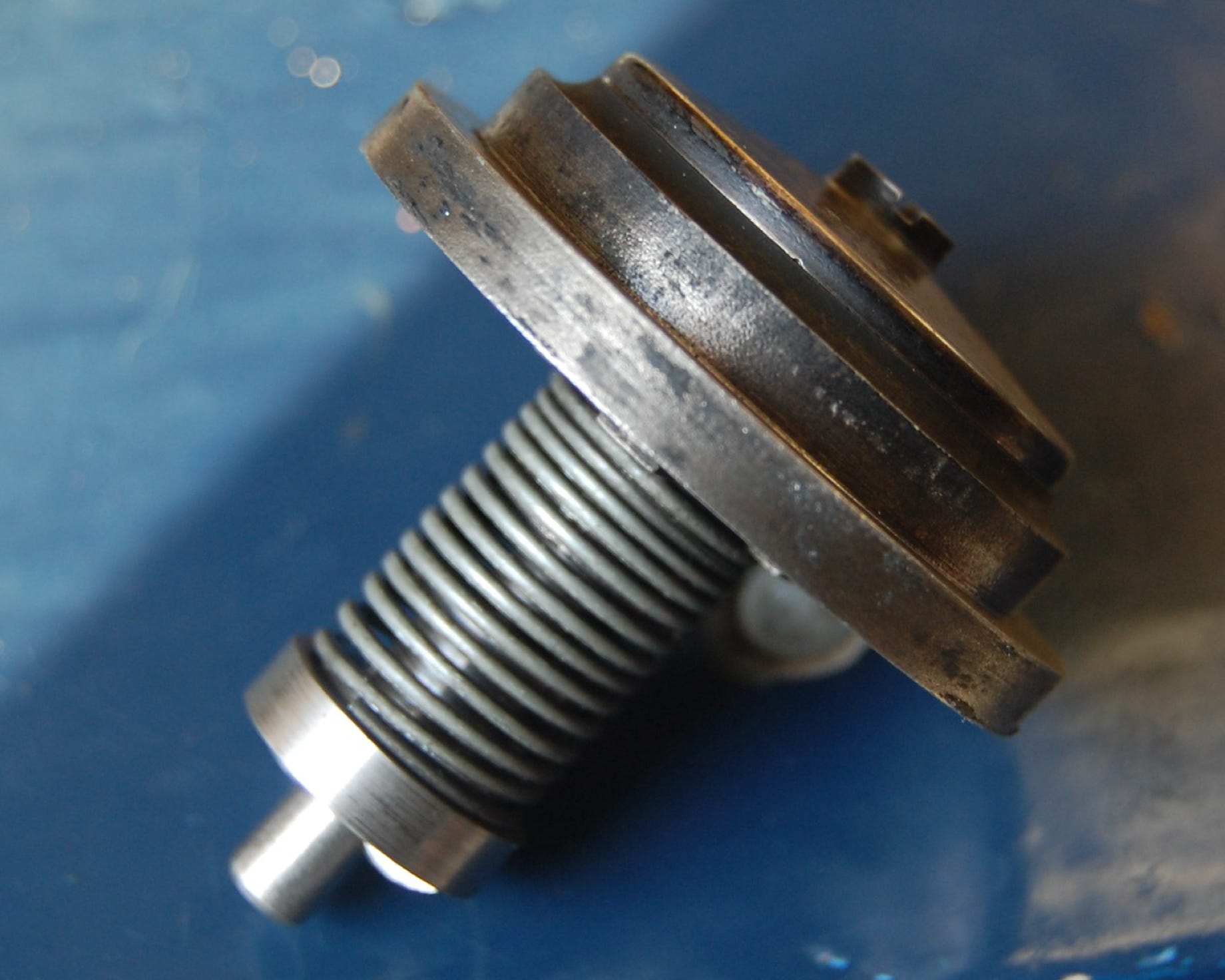
Atmospheric inlet valve
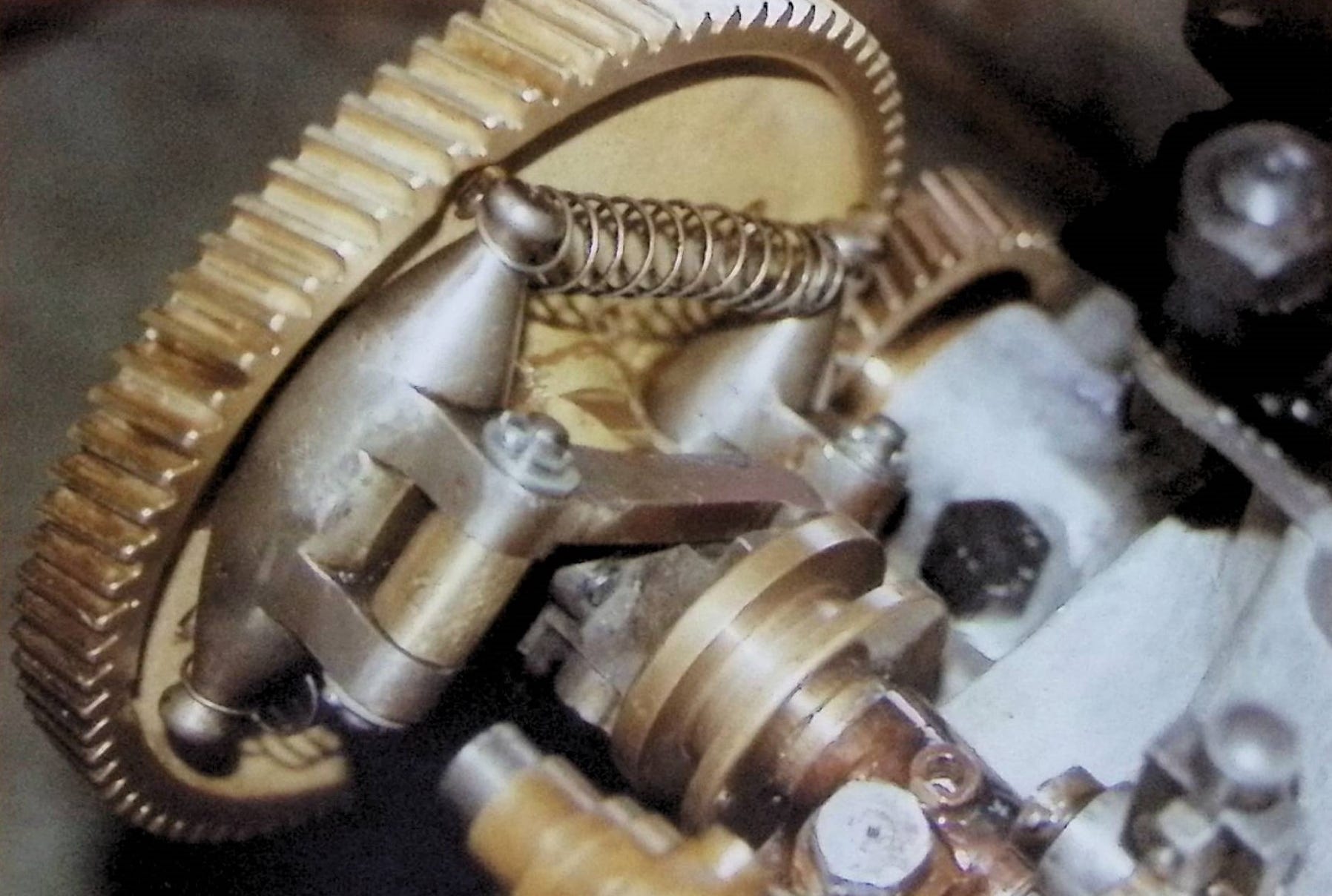
Governor mechanism inside the camshaft drive gear
Repair to sump
Page updated
Copyright Team Panhard
2024